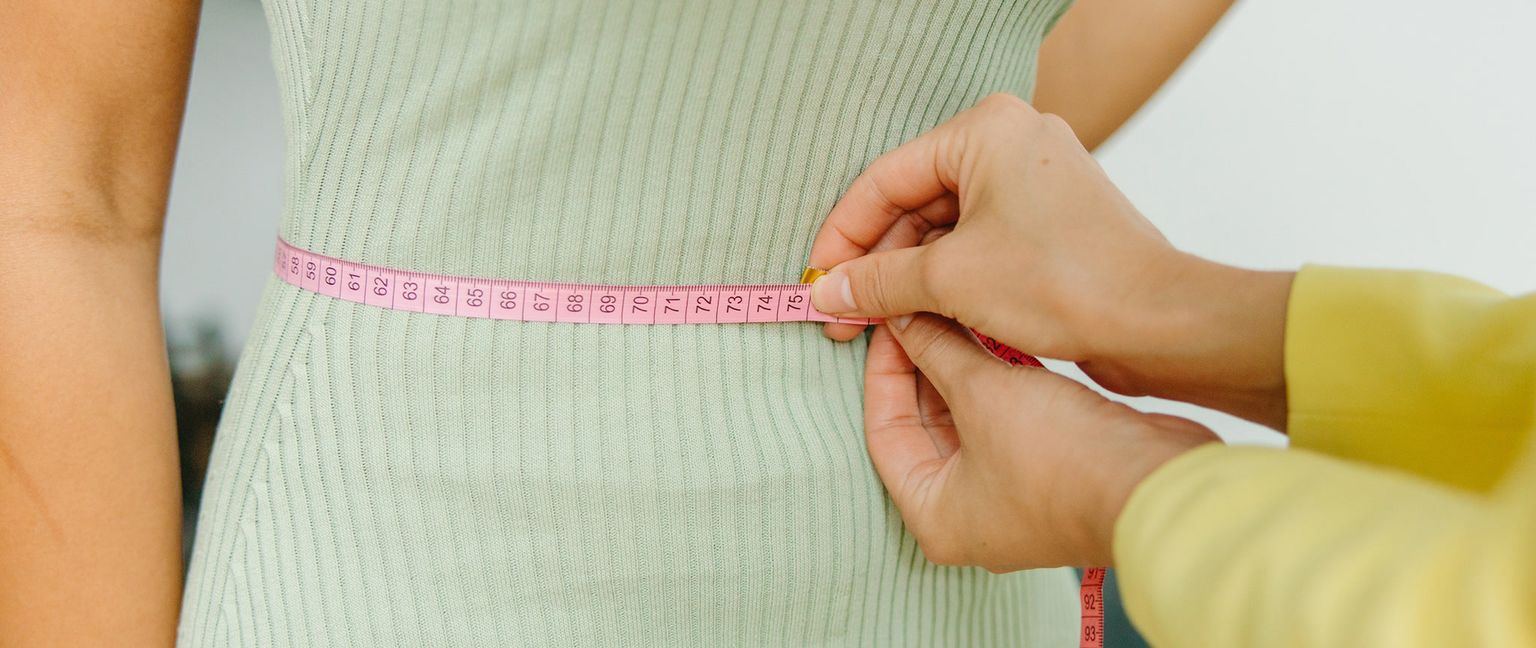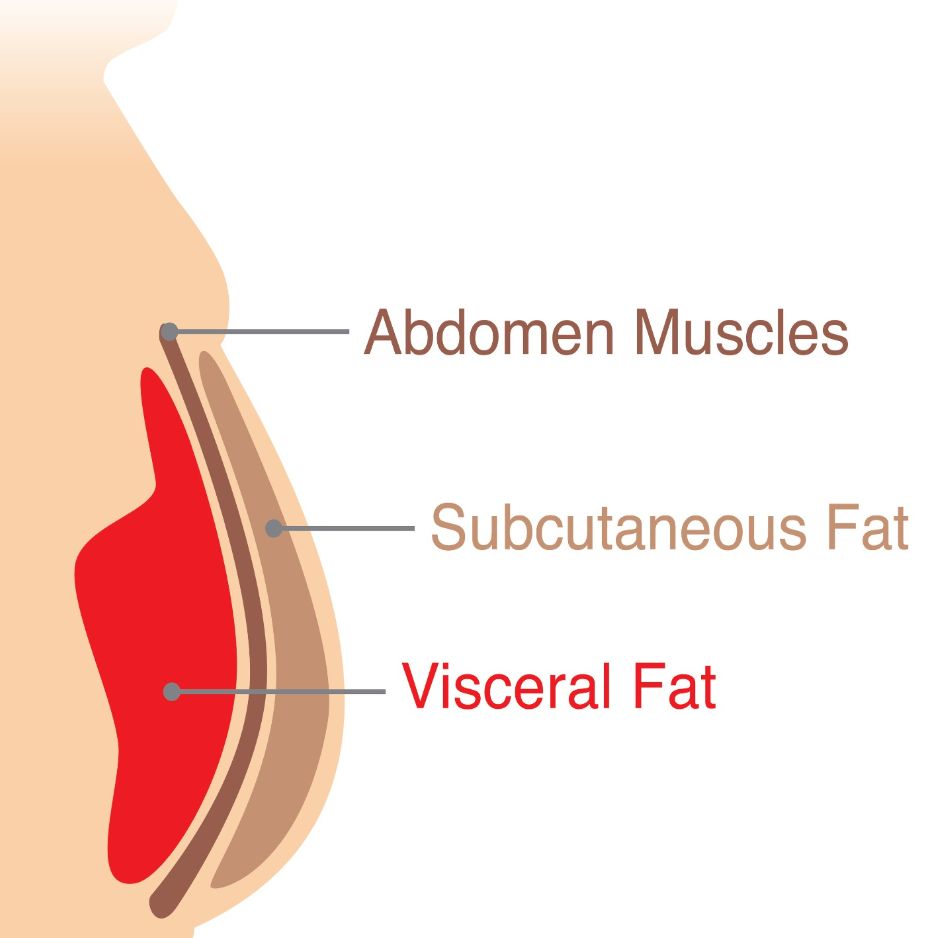How to Get Rid of Subcutaneous Fat: A Step-by-Step Guide

How to Get Rid of Subcutaneous Fat: A Step-by-Step Guide
Are you tired of those stubborn pockets of fat that cling to your body like a clingy ex? Well, fret no more! In this step-by-step guide, we will uncover strategies to bid farewell to subcutaneous fat. Prepare yourself for a journey of knowledge, science, and most importantly, laughter! Let's dive in, shall we?
Get weekly updates.
Understanding Subcutaneous Fat
Before we embark on our quest to eliminate subcutaneous fat, let's take a moment to understand what it actually is. Subcutaneous fat, my friend, is that layer of fat that lies just beneath the surface of your skin. It's not dangerous like its evil twin, visceral fat, but it can still make you feel as uncomfortable.
But let's delve deeper into the world of subcutaneous fat and explore its fascinating characteristics. Did you know that subcutaneous fat is not only responsible for giving your body its shape, but it also plays a crucial role in regulating body temperature? Yes, that's right! This layer of fat acts as a natural insulator, keeping you warm during those chilly winter months. So, while it may not be your favorite feature, it's doing its best to keep you cozy.
What is Subcutaneous Fat?
Subcutaneous fat is the body's way of insulating, cushioning, and protecting your precious organs. It's like a big, squishy marshmallow surrounding your organs. While it may seem like an annoyance, it does serve a purpose.
Did you know that subcutaneous fat also acts as a shock absorber? Yes, that's right! It provides a protective layer for your organs, cushioning them from any external impact. So, the next time you accidentally bump into something, thank your subcutaneous fat for keeping your organs safe and sound.
The Difference Between Subcutaneous Fat and Visceral Fat
Now, let's clear up any confusion you may have between subcutaneous fat and its mischievous sibling, visceral fat. Subcutaneous fat hangs around your midsection, thighs, and arms, while visceral fat cozies up to your organs like an overprotective grandma. Visceral fat is the real troublemaker, but today, we're focusing on its less sinister counterpart.
But here's an interesting fact for you: subcutaneous fat and visceral fat are not entirely separate entities. They actually work together to maintain a delicate balance in your body. While subcutaneous fat may be more visible, visceral fat plays a vital role in storing energy and releasing hormones. So, it's a complex relationship between these two types of fat, each with its own unique purpose.
Why is Subcutaneous Fat a Problem?
Alright, you're probably wondering why subcutaneous fat is a problem if it's just harmless padding. Well, strap yourself in for some harsh truths, my friend. Excess subcutaneous fat can increase your risk of various health issues, like diabetes and heart disease. Additionally, it can negatively affect your self-esteem.
However, it's important to note that not all subcutaneous fat is created equal. The distribution of fat in your body plays a significant role in determining its impact on your health. For example, carrying excess subcutaneous fat around your waistline, also known as central obesity, is associated with a higher risk of developing chronic diseases. On the other hand, subcutaneous fat in other areas of your body may not pose the same level of risk.
So, while subcutaneous fat may have its drawbacks, it's important to approach its elimination with caution. Remember, it serves important functions in your body, and a balanced approach to achieving a healthy body composition is key.
The Science Behind Fat Loss
Now that we've acquainted ourselves with subcutaneous fat, it's time to unveil the secrets of fat loss. Brace yourself for a crash course in science that will supercharge your fat loss!
How the Body Stores and Burns Fat
Picture your body as a storage unit for fat. When you consume more calories than you burn, your body stores the excess energy in your subcutaneous fat cells. But fear not! By creating a calorie deficit through diet and exercise, you'll force your body to tap into its piggy bank of fat and burn it for fuel. Goodbye, love handles!
Let's dive deeper into the fascinating process of fat storage and burning. When you consume food, your body breaks it down into its basic components, including carbohydrates, proteins, and fats. These components are then transported to different parts of your body for various purposes. When it comes to fat, it is primarily stored in specialized cells called adipocytes.
Adipocytes, also known as fat cells, are like tiny warehouses specifically designed to hold onto excess energy. They expand and contract depending on the amount of fat they store. When you consume more calories than your body needs, these adipocytes eagerly take in the excess and store it as triglycerides, a form of fat.
Now, let's move on to the exciting part - burning fat! When your body needs energy, it first looks to the readily available glucose in your bloodstream. However, when glucose levels are low, such as during prolonged exercise or fasting, your body switches gears and starts breaking down stored fat. This process, known as lipolysis, involves the release of stored triglycerides from adipocytes into the bloodstream, where they are then transported to the muscles to be used as fuel.
But how does your body actually burn fat? It's all thanks to a complex series of chemical reactions called beta-oxidation. During beta-oxidation, the triglycerides are broken down into smaller molecules called fatty acids. These fatty acids are then transported into the mitochondria, the powerhouse of your cells, where they undergo further breakdown to produce ATP, the energy currency of your body. This continuous process of breaking down stored fat and using it for energy is what ultimately leads to fat loss.
The Role of Metabolism in Fat Loss
Oh, metabolism, the mythical creature responsible for burning calories and powering your fat-burning efforts. It's like a tiny fire-breathing dragon living inside you, boosting your energy expenditure. While you can't control your genetics, you can control your actions. By incorporating regular exercise and eating metabolism-boosting foods, you'll awaken the sleeping dragon within.
Metabolism refers to all the chemical processes that occur in your body to maintain life. It includes processes like digestion, respiration, and the breakdown of nutrients to produce energy. Your metabolic rate, on the other hand, is the number of calories your body burns at rest to maintain basic bodily functions.
When it comes to fat loss, metabolism plays a crucial role. A faster metabolism means your body is burning more calories, even when you're not actively exercising. While some people are naturally blessed with a speedy metabolism, others may have a slower one due to various factors like age, muscle mass, and hormone levels.
But fear not, for there are ways to rev up your metabolism and enhance your fat-burning potential. One of the most effective ways is through regular physical activity. Exercise not only burns calories during the activity itself but also increases your metabolic rate for hours after you've finished. This phenomenon, known as the afterburn effect, can significantly contribute to fat loss.
In addition to exercise, certain foods and nutrients can also give your metabolism a boost. For example, foods rich in protein require more energy to digest and metabolize, thereby increasing your metabolic rate. Similarly, spicy foods containing compounds like capsaicin can temporarily increase your metabolism by raising your body temperature.
Furthermore, building and maintaining muscle mass can have a significant impact on your metabolism. Muscles are more metabolically active than fat, meaning they burn more calories at rest. Incorporating strength training exercises into your routine can help increase muscle mass and elevate your metabolic rate, leading to enhanced fat loss.
So, while you may not have full control over your metabolism, you can certainly influence it through lifestyle choices. By staying active, eating a balanced diet, and incorporating metabolism-boosting strategies, you can awaken the dormant dragon within and achieve your fat loss goals.
Dietary Changes to Reduce Subcutaneous Fat
Now, let's set the table for some delectable dietary changes that will leave subcutaneous fat running for the hills. But don't worry, we won't be subsisting on a diet of kale smoothies and rabbit food. There is hope for delicious and nutritious delights!
Foods to Include in Your Diet
First on the menu are foods that will be your partners in crime on this fat-fighting adventure. Load up on lean proteins like chicken breast, fish, and tofu. These will keep you feeling satisfied and help preserve your muscle mass, so you'll be ready to take on the world with your newly found confidence. Don't forget to include plenty of fruits, vegetables, and whole grains for a well-rounded and nutritious feast.
Foods to Avoid
Now, let's address the foods that should be banished from your plate like an unruly dinner guest. Say goodbye to sugary treats, processed snacks, and sneaky trans fats. They can sabotage your progress and make you feel bloated. Stick to whole, unprocessed foods to fuel your fat-loss journey.
The Importance of Hydration
Next up, we need to talk about the most underrated superhero of all time - water! Yes, my friend, hydrating yourself like a desert oasis is essential for flushing out toxins and keeping your body functioning at its prime. Plus, it fills you up, so you'll be less tempted to dive headfirst into an all-you-can-eat buffet. Cheers to H2O!
Exercise Strategies for Burning Subcutaneous Fat
Rise and shine, it's time to get your body moving and burning off that subcutaneous fat! But never fear, we won't be chaining you to a treadmill for hours on end. We've concocted a delightful mixture of exercises to keep you entertained and burn off excess subcutaneous fat.
Cardiovascular Exercises
Cardio, my dear reader, is the ice cream to your cone, the cheese to your macaroni, the dance to your party. Whether you prefer the rhythmic pounding of your feet on the pavement or the smooth glide of a bike, cardio exercises like jogging, cycling, or dancing will help you become a calorie-burning machine. Get ready to sweat it out and feel the burn!
Strength Training
Time to unleash your inner superhero with some good old-fashioned strength training. Don't worry, we're not asking you to transform into the Incredible Hulk overnight. Incorporating resistance exercises like squats, lunges, and push-ups will help build lean muscle mass and increase your metabolism. You'll be turning heads with your newfound strength and confidence!
High-Intensity Interval Training (HIIT)
If you're a fan of bursts of intensity followed by moments of glorious recovery, then HIIT is your new best friend. This heart-pumping, sweat-inducing workout involves alternating between high-intensity exercises and short recovery periods. Not only will you torch calories like a bonfire, but you'll also keep boredom at bay with the constant change of pace. Get ready to HIIT it and quit it, subcutaneous fat!
Now, my friend, armed with these invaluable tips, you are ready to embark on your subcutaneous fat-fighting journey. Remember, laughter is essential along the way, so don't forget to enjoy the process and celebrate your victories, no matter how small. And, of course, if you want to continue tracking your progress with precise measurements, consider BodySpec's affordable DEXA scans. They will help you stay on track and monitor your body fat, muscle mass, and bone health over time. Happy fat-busting!


